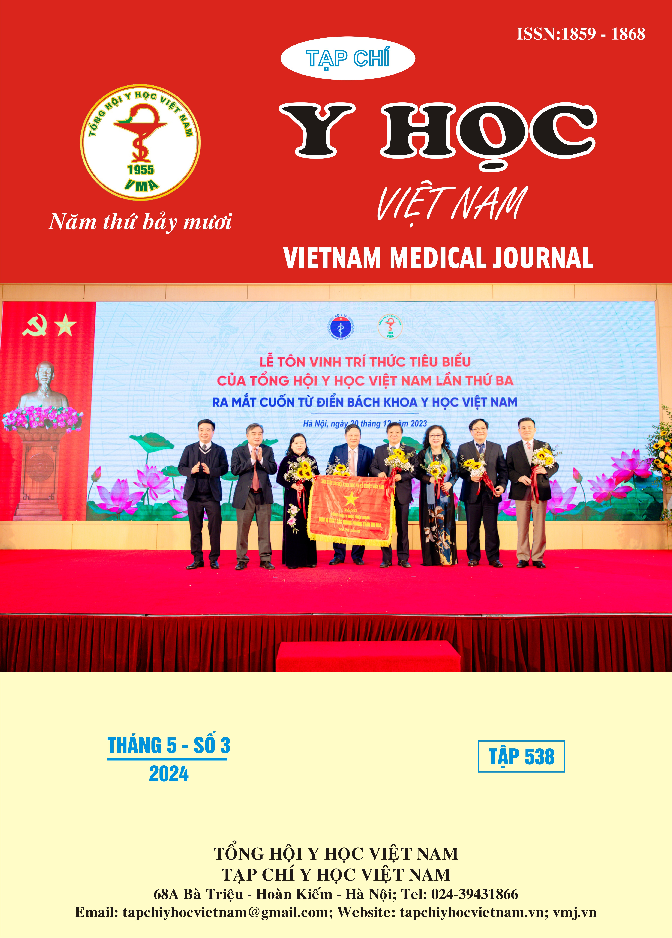PREVENTION AND MANAGEMENT OF RHINOPLASTY COMPLICATIONS: A CLINICAL CASE REPORT
Main Article Content
Abstract
Objectives: Rhinoplasty is one of the most popular cosmetic surgical procedures. However, like any other surgery, complications may arise after rhinoplasty. Preventing and managing these complications are integral parts of the treatment process. The appropriate methods for managing complications depend on each individual case. Case report: A 30-year-old female patient underwent rhinoplasty 18 months prior to admission. The surgical technique and materials used for the rhinoplasty procedure were not clearly documented. Immediately after the rhinoplasty, the patient experienced significant swelling and pain throughout the nose. The patient had been treated with antibiotics and anti-inflammatory medications for a prolonged course without noticeable improvement. At admission, the patient exhibited significant swelling throughout the entire nasal region, tenderness upon palpation along the nasal dorsum and nasal tip. Nasal endoscopy revealed edematous sinonasal mucosa with mucopurulent discharge. The patient was diagnosed with post-rhinoplasty infection, which did not respond to internal medicine treatment. The exploratory surgery revealed a mass of friable tissue and purulent discharge; beneath the friable tissue layer was the alloplastic graft material along with multiple fragments of hardened debris. All alloplastic graft material, fragments of hardened debris, and friable tissue were removed. One month after the procedure, the nasal swelling and pain subsided, and the wound healed well. Nasal endoscopy revealed no significant swelling or purulent discharge. The patient desires to have rhinoplasty after her condition stabilizes. Discussion: Complications following rhinoplasty surgery may occur. Monitoring, early detection, and accurate diagnosis are crucial keys to successful management. Therefore, ensuring the best treatment outcomes for patients, both aesthetically and functionally. In this patient, upon our initial assessment, the infection had been present for a prolonged duration prior. However, with the combination of surgical removal of the alloplastic graft materials and inflamed tissue, along with antibiotic use, the patient's infection was effectively managed. Conclusion: Rhinoplasty is a popular cosmetic surgical procedure, yet postoperative complications can occur. Prevention, early detection, and timely management of complications if they arise are necessary to ensure good surgical outcomes in both aesthetic and functional aspects.
Article Details
Keywords
Rhinoplasty, Rhinoplasty complications, Alloplastic graft.
References
2. Taha, M., et al., Adult Knowledge About Postoperative Complications of Rhinoplasty in the Western Region of Saudi Arabia. Cureus, 2023. 15(4): p. e37183.
3. Moon, K.-C., et al., Late-onset inflammation in Asian rhinoplasty using alloplastic implants. Aesthetic Plastic Surgery, 2021. 45: p. 670-678.
4. Surowitz, J.B. and S.P. Most, Complications of rhinoplasty. Facial Plast Surg Clin North Am, 2013. 21(4): p. 639-51.
5. Choi, J.Y., Complications of Alloplast Rhinoplasty and Their Management: A Comprehensive Review. Facial Plast Surg, 2020. 36(5): p. 517-527.
6. Kim, Y.K., K. Kania, and A.H. Nguyen, Rhinoplasty with Cartilage and Alloplastic Materials, Nasal SMAS Management in Asian Rhinoplasty, Contracture Classification, and Secondary Rhinoplasty with Contracture. Semin Plast Surg, 2015. 29(4): p. 255-61.
7. Ferril, G.R., J.M. Wudel, and A.A. Winkler, Management of complications from alloplastic implants in rhinoplasty. Curr Opin Otolaryngol Head Neck Surg, 2013. 21(4): p. 372-8.
8. Seo, M.G., E.K. Choi, and K.J. Chung, Delayed inflammatory response evoked in nasal alloplastic implants after COVID-19 vaccination: A case report. World J Clin Cases, 2022. 10(23): p. 8298-8303.


